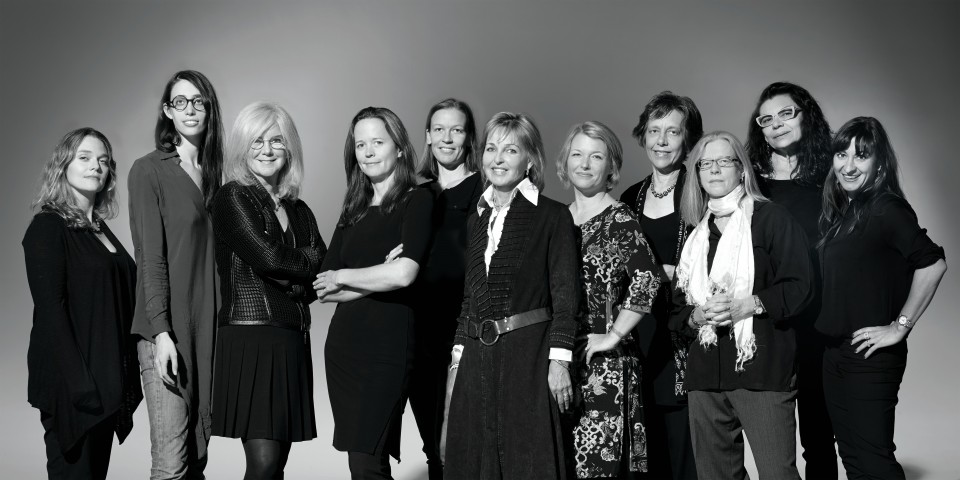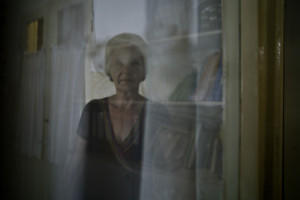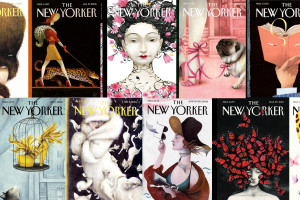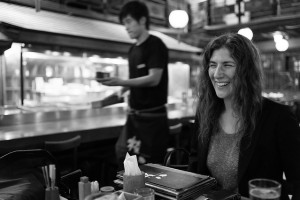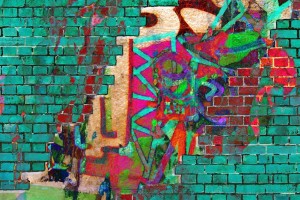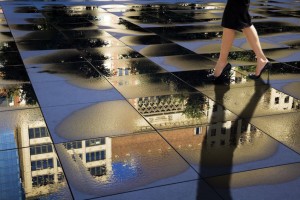National Geographic’s Women of Vision Exhibit
In 1888 an organization was founded as a club for elites interested in travel, and to inspire people to care about the planet through enhancing knowledge of geography. It was named the National Geographic Society.
It now stands as one of the largest nonprofit institutions in the world that focuses on science and education. Within the magazine and throughout all of their programs, extraordinary images attract viewers and embody each story with passion.
In addition, a museum accompanies the headquarters in Washington, D.C., where exhibits feature works from the magazine’s photographers, explorers, and scientists. In October of 2013, for the 125th anniversary, a new photography exhibit, accompanied by a book, was released and is now touring the country. Eleven of the most talented, dedicated, and active women photographers within the society were chosen to be featured in the “Women of Vision: National Geographic Photographers on Assignment” exhibition.
Upon looking back on the last decade of high profile stories and momentous images, editors and curators found that many had one thing in common: they were captured by women photographers. Elizabeth Krist, Senior Photo Editor at National Geographic, told us: “I am excited at the opportunity to highlight some of this fantastic work, because I still think there aren’t enough women who are shooting. The majority of the people who shoot for us are still men by a pretty big margin, so to be able to inspire women to be fearless and to think they can do anything is great and a real inspiration.” Featuring a variety of subjects from landscape to warfare and photographers of all ages, this exhibit gives insight and inspiration on a variety of levels.
Following are some of the women featured:
Kitra Cahana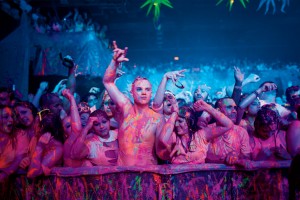 Cahana was introduced to journalism during an internship at a newspaper in Israel and began at National Geographic in 2009 as a photo intern. She is currently one of their youngest photographers. She focuses on social, anthropological, and spiritual themes in her work. “I think the most significant bodies of work come with extended devotion. You don’t have to look far from where you are to find an important story that can change other people’s lives. I think it’s about finding a subject that you love, that you love spending time with, and holding yourself to the highest standards in the most honoring way to the other person.” She is currently expanding her work focused on her father with more of a fine art spectrum, and stated, “there are photos on the website, but I am doing video art, audio, and sculptured text. It is a totally new medium and a new means of storytelling, but it’s still documentary in a sense, because I’m trying to tell a very specific, ethnographic story. In a way I’m at the beginning of this big new trajectory.”
Cahana was introduced to journalism during an internship at a newspaper in Israel and began at National Geographic in 2009 as a photo intern. She is currently one of their youngest photographers. She focuses on social, anthropological, and spiritual themes in her work. “I think the most significant bodies of work come with extended devotion. You don’t have to look far from where you are to find an important story that can change other people’s lives. I think it’s about finding a subject that you love, that you love spending time with, and holding yourself to the highest standards in the most honoring way to the other person.” She is currently expanding her work focused on her father with more of a fine art spectrum, and stated, “there are photos on the website, but I am doing video art, audio, and sculptured text. It is a totally new medium and a new means of storytelling, but it’s still documentary in a sense, because I’m trying to tell a very specific, ethnographic story. In a way I’m at the beginning of this big new trajectory.”
Amy Toensing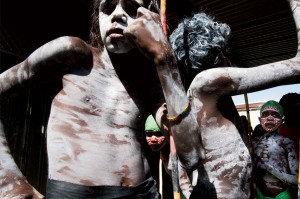 Toensing has made a career out of photographing people and the everyday moments of their lives in the context of larger stories about culture and the human condition. “I strive to immerse myself in my subjects’ lives in order to make real and informed images. To do this, I have to leave my comfort zone, which can be a demanding and humbling process. I value that challenge.” Toensing tells us about her process. “I want my photographs to move people: to evoke a change of heart or an appreciation of something beautiful, to inspire someone to act.” In her early twenties, Toensing was accepted into The Eddie Adams Workshop, to meet and work with professionals in the photojournalism industry. “When I went to the workshop, it was my first encounter with the industry. Most of the people there as leaders and speakers were men, but a very distinct moment for me was when Lynn Johnson spoke [see her info below]. She’s very deep, purposeful, and intense about her mission and speaks to it in an eloquent way. When you’re starting out it’s very impactful and inspiring to encounter someone you can relate to who is doing what you want to do,” Toensing says.
Toensing has made a career out of photographing people and the everyday moments of their lives in the context of larger stories about culture and the human condition. “I strive to immerse myself in my subjects’ lives in order to make real and informed images. To do this, I have to leave my comfort zone, which can be a demanding and humbling process. I value that challenge.” Toensing tells us about her process. “I want my photographs to move people: to evoke a change of heart or an appreciation of something beautiful, to inspire someone to act.” In her early twenties, Toensing was accepted into The Eddie Adams Workshop, to meet and work with professionals in the photojournalism industry. “When I went to the workshop, it was my first encounter with the industry. Most of the people there as leaders and speakers were men, but a very distinct moment for me was when Lynn Johnson spoke [see her info below]. She’s very deep, purposeful, and intense about her mission and speaks to it in an eloquent way. When you’re starting out it’s very impactful and inspiring to encounter someone you can relate to who is doing what you want to do,” Toensing says.
Erika Larsen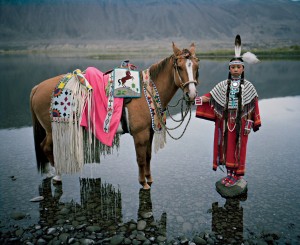 Larsen found photography at a young age when her father, who worked on the Hubble Space telescope, would bring home printed-out images of the planets for her to see. She recalls, “I remember holding them and thinking, ‘photography must be some kind of magic, because I am holding the planets.’” Pursuing photography from youth to graduate school and then working as an assistant to photographers after graduation, she quickly expanded her portfolio with photographs revolving around family and friends in daily life. Her photography and videography now centers on “cultures that maintain strong connections with nature.” Some of her projects have included the modern hunter, Native American tribes with strong ties to horsemanship, and a four-year project on the indigenous people of the Arctic. The latter have strong ties to their nomadic pastoral society, but are functioning as a modern economic culture. Larsen noted, “I’m inspired by what nature is telling us, and who the people are who really interpret nature’s language, so that we as humans can listen and realize it is a part of us, as well. I’m inspired by languages, because at the end of the day it’s all about communication.”
Larsen found photography at a young age when her father, who worked on the Hubble Space telescope, would bring home printed-out images of the planets for her to see. She recalls, “I remember holding them and thinking, ‘photography must be some kind of magic, because I am holding the planets.’” Pursuing photography from youth to graduate school and then working as an assistant to photographers after graduation, she quickly expanded her portfolio with photographs revolving around family and friends in daily life. Her photography and videography now centers on “cultures that maintain strong connections with nature.” Some of her projects have included the modern hunter, Native American tribes with strong ties to horsemanship, and a four-year project on the indigenous people of the Arctic. The latter have strong ties to their nomadic pastoral society, but are functioning as a modern economic culture. Larsen noted, “I’m inspired by what nature is telling us, and who the people are who really interpret nature’s language, so that we as humans can listen and realize it is a part of us, as well. I’m inspired by languages, because at the end of the day it’s all about communication.”
Maggie Steber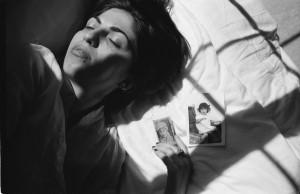 Raised by her mom in Austin, Texas, Steber noted about her upbringing: “What we didn’t have in money, we had in culture.” Originally a French major in college, Steber discovered photography during her undergraduate career and never looked back. She has visited 63 countries, been a photo editor for The Associated Press, the Director of Photography at The Miami Herald, covered a war in Africa, and spent over thirty years documenting Haiti. Her sage advice: “If you arm yourself by learning the history, culture, and current events of a place, I think you can make better, more meaningful, and more precise images. I think women are in tune with things in a way that can be more personal. There are lots of sensitive men, but some places men simply cannot get into the way we can, both physically and emotionally. Be a “woman warrior” for whatever you do, and recognize that it’s hard work. Always be sincere, and try as much as possible to be ladies; I know that sounds old-fashioned, but you would be surprised how much people will respect you if you are not trying to be like a man! We are wonderful, we women, so enjoy it, work hard, be smart and kind, don’t be a sap, and don’t talk about your ideas too much around other people, because everyone else out there is looking for an idea.”
Raised by her mom in Austin, Texas, Steber noted about her upbringing: “What we didn’t have in money, we had in culture.” Originally a French major in college, Steber discovered photography during her undergraduate career and never looked back. She has visited 63 countries, been a photo editor for The Associated Press, the Director of Photography at The Miami Herald, covered a war in Africa, and spent over thirty years documenting Haiti. Her sage advice: “If you arm yourself by learning the history, culture, and current events of a place, I think you can make better, more meaningful, and more precise images. I think women are in tune with things in a way that can be more personal. There are lots of sensitive men, but some places men simply cannot get into the way we can, both physically and emotionally. Be a “woman warrior” for whatever you do, and recognize that it’s hard work. Always be sincere, and try as much as possible to be ladies; I know that sounds old-fashioned, but you would be surprised how much people will respect you if you are not trying to be like a man! We are wonderful, we women, so enjoy it, work hard, be smart and kind, don’t be a sap, and don’t talk about your ideas too much around other people, because everyone else out there is looking for an idea.”
Lynn Johnson Beginning as a newspaper photographer, and then developing a love for long-term documentary work, Johnson has a traveler mentality, is driven by her curiosity, and is devoted to sharing people’s stories. Early on, Johnson was drawn to the work of The Farm Security Administration photographers from the Great Depression of the 1930’s. She notes, “If you have the perception that every story is powerful because it’s about someone’s life and every life is special, then by recording, honoring, and learning from that life, you are moving yourself forward, and preparing yourself for the next level of development: intellectually, emotionally, psychologically. You are helping others too.” She goes on to elaborate: “Having that camera seemed to help me make sense of the world. If as a culture, as a people, as a world, we are only satisfied with our own worldview and no one else’s, then that’s a source of prejudice, of hatred, of violence, and of an inability to see the perspective of another person. Your willingness to go out there and conquer your fear, in order to be present in the life of another, is an extraordinary passage.” Johnson is passionate about teaching and providing her knowledge to others. She asserts: “You have to work your tail off, especially as a woman. And do not let anyone tell you that you cannot do it. I think one of the great powers of this exhibit is all the women have had to work really hard to be successful.”
Beginning as a newspaper photographer, and then developing a love for long-term documentary work, Johnson has a traveler mentality, is driven by her curiosity, and is devoted to sharing people’s stories. Early on, Johnson was drawn to the work of The Farm Security Administration photographers from the Great Depression of the 1930’s. She notes, “If you have the perception that every story is powerful because it’s about someone’s life and every life is special, then by recording, honoring, and learning from that life, you are moving yourself forward, and preparing yourself for the next level of development: intellectually, emotionally, psychologically. You are helping others too.” She goes on to elaborate: “Having that camera seemed to help me make sense of the world. If as a culture, as a people, as a world, we are only satisfied with our own worldview and no one else’s, then that’s a source of prejudice, of hatred, of violence, and of an inability to see the perspective of another person. Your willingness to go out there and conquer your fear, in order to be present in the life of another, is an extraordinary passage.” Johnson is passionate about teaching and providing her knowledge to others. She asserts: “You have to work your tail off, especially as a woman. And do not let anyone tell you that you cannot do it. I think one of the great powers of this exhibit is all the women have had to work really hard to be successful.”
Jodi Cobb Cobb spent her childhood in Iran as the daughter of a Texaco engineer. By the time she was twelve, she had visited fifteen countries and traveled around the world twice. She discovered journalism in high school and photography in college, after which she worked at two newspapers. She would apply to National Geographic occasionally, and would be turned down and told to go get more experience. Finally, upon her first trial assignment, she landed a 30-page story of her own. She has now produced thirty stories for National Geographic and has won many awards. Her perspective: “I never thought of myself as a ‘woman photographer’ — I was just a photographer. I did the same hours and the same job as all the guys, so it always shocked me when I was described as a woman photographer. It made me question myself all the time, however, I was able to get unique access in places that men couldn’t go. I decided that not only was that something I was uniquely qualified to do, but it was something that interested me deeply, because women’s issues resonated with me so strongly. Every job opportunity was breaking down a door of some sort. I was the only woman photographer everywhere I ever worked on staff. When I was doing my job, there was the question of whether a girl could do it; now that’s not even a question,” she says.
Cobb spent her childhood in Iran as the daughter of a Texaco engineer. By the time she was twelve, she had visited fifteen countries and traveled around the world twice. She discovered journalism in high school and photography in college, after which she worked at two newspapers. She would apply to National Geographic occasionally, and would be turned down and told to go get more experience. Finally, upon her first trial assignment, she landed a 30-page story of her own. She has now produced thirty stories for National Geographic and has won many awards. Her perspective: “I never thought of myself as a ‘woman photographer’ — I was just a photographer. I did the same hours and the same job as all the guys, so it always shocked me when I was described as a woman photographer. It made me question myself all the time, however, I was able to get unique access in places that men couldn’t go. I decided that not only was that something I was uniquely qualified to do, but it was something that interested me deeply, because women’s issues resonated with me so strongly. Every job opportunity was breaking down a door of some sort. I was the only woman photographer everywhere I ever worked on staff. When I was doing my job, there was the question of whether a girl could do it; now that’s not even a question,” she says.
Beverly Joubert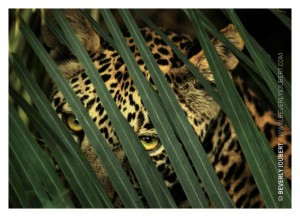 Born a child of South Africa with a natural explorer instinct and raised reading adventure stories of Livingstone and Selous, Joubert is now an incredible activist. In her early twenties, Beverly found the two loves of her life: Africa’s paradise and Dereck, her high school sweetheart and other half of the Joubert team. In the 1980’s the two began documenting the unusual interactions of species during a major environmental change. Around 1985, National Geographic published the Jouberts’ first article and produced a one hour-film special on their findings. The couple has been submitting material for them ever since. The two reside in Botswana, where they share their conservation efforts and document what is left of native African animals. Through her majestic photographs, Joubert captures moments of wild animals, taking viewers on a journey through the animals lives, relating to them, falling in love with them, and seeing them as something special. “Over my lifetime we have lost 95% of the animals in Africa; we no longer have the luxury of time when it comes to saving these threatened species. We need to act now, and we need to do it together,” Joubert told us. Expect a new film and exhibition on elephants in 2015, as well as an I-book on leopards, and many more conservation efforts to come. “Now is the time we all need to make responsible decisions, we all need to look at life through conservationist eyes.” Start getting involved here: www.greatplainsconservation.com.
Born a child of South Africa with a natural explorer instinct and raised reading adventure stories of Livingstone and Selous, Joubert is now an incredible activist. In her early twenties, Beverly found the two loves of her life: Africa’s paradise and Dereck, her high school sweetheart and other half of the Joubert team. In the 1980’s the two began documenting the unusual interactions of species during a major environmental change. Around 1985, National Geographic published the Jouberts’ first article and produced a one hour-film special on their findings. The couple has been submitting material for them ever since. The two reside in Botswana, where they share their conservation efforts and document what is left of native African animals. Through her majestic photographs, Joubert captures moments of wild animals, taking viewers on a journey through the animals lives, relating to them, falling in love with them, and seeing them as something special. “Over my lifetime we have lost 95% of the animals in Africa; we no longer have the luxury of time when it comes to saving these threatened species. We need to act now, and we need to do it together,” Joubert told us. Expect a new film and exhibition on elephants in 2015, as well as an I-book on leopards, and many more conservation efforts to come. “Now is the time we all need to make responsible decisions, we all need to look at life through conservationist eyes.” Start getting involved here: www.greatplainsconservation.com.
These women are unique and inspiring, with their passions radiating through each image. The characteristics that ring true through them all is their friendly, charismatic spirit, with a willingness to share their insight and true love for the stories they report on. They have noted that photography helps make sense of the world, and a key to telling someone’s story is to listen, be observant, and be patient. Not only is that seen through their photographs, but also heard in their voices. I had the honor of speaking with these women, and with the amount of information on their work, there is surely more to come.
The exhibit, “Women of Vision: National Geographic Photographers on Assignment,” can be seen at The Mint Museum in Charlotte, North Carolina, through June 20th. Following that, it will move to The Cranbrook Instuitute of Science in Michigan, from September thru December 2014.
TAGS: photography WiB
 Interviewer Interview Prep
Interviewer Interview Prep Impactful Mentees
Impactful Mentees Benefits of a Mentor
Benefits of a Mentor Advice for First-Time Managers
Advice for First-Time Managers Overcoming the 18-month Itch
Overcoming the 18-month Itch Dressing for Your Style
Dressing for Your Style Interview Style Tips
Interview Style Tips Women's Stocking Stuffers
Women's Stocking Stuffers Gift the Busy Traveler
Gift the Busy Traveler Father’s Day Gift Guide
Father’s Day Gift Guide Airport Layover Activities
Airport Layover Activities Traveling & Eating Healthy
Traveling & Eating Healthy Travel Like a Boss Lady
Travel Like a Boss Lady The Dual California Life
The Dual California Life Gifts for Thanksgiving
Gifts for Thanksgiving Summer Reading List
Summer Reading List Top Leisurely Reads
Top Leisurely Reads New Year, New Books
New Year, New Books Life Lessons from a Sitcom
Life Lessons from a Sitcom Oprah, Amy or Amal?
Oprah, Amy or Amal?





